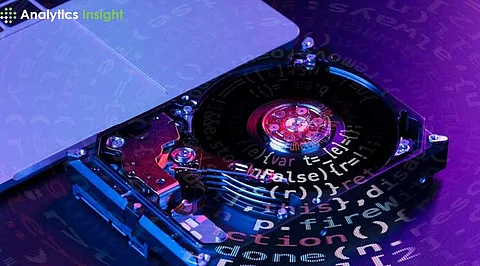

Artificial intelligence is not just transforming the way we talk to software; it's transforming the machines themselves. From microprocessors to big servers, the impact of AI on hardware design is transforming computer design. The revolution is promising faster, wiser, and more efficient machines, redefining the technology world in ways we're just starting to understand. Let's dive in a bit deeper at how AI is fueling this revolution.
Built into the heart of each computer is the processor and artificial intelligence is transforming chip fabrication. The way chips used to be designed was a labour-intensive process: designers drew layouts, tested configurations, and optimised ad infinitum to eke out performance. AI is the master sidekick that gets it done now.
Machine learning-driven software can go through millions of design options within hours, finding patterns and optimizations that no one could ever imagine duplicating. Take Google’s Tensor chips: rumours say AI helped optimize their layout for power and heat, cutting development time by months. Smaller companies are jumping in too, using AI to craft custom silicon that rivals the big players. The result? Chips that pack more punch while sipping less energy.
Heat’s always been the enemy of hardware, but AI’s flipping the script. Designing cooling systems: think fans, heat sinks, or liquid loops; used to rely on trial and error. Today, AI simulations predict how air and liquid flow through a chassis before a prototype is even built. Picture this: an AI modelling a server rack, tweaking fin angles on a heat sink to shave off a few degrees.
That’s not sci-fi, it’s happening now. Companies like Intel and AMD are reportedly using these tricks to push their latest processors harder without turning them into space heaters. For gamers and data centres alike, this means quieter rigs that run cooler and last longer.
Energy efficiency is the holy grail of modern computing, and AI is leading the charge. Hardware isn’t just about raw speed anymore; it’s about doing more with less juice. AI code is helping develop power management systems that can learn and adapt. Imagine a notebook that learns your habits, turning off idle cores or capping background processes to save power.
Rumours from the mobile world indicate the next generation of ARM-based chips, like the Pixel 9A's, use AI to balance performance and power dynamically. On the server side, AI’s optimizing massive arrays, cutting electricity bills for cloud giants. It’s green tech with a silicon twist, and it’s only getting started.
Building hardware used to mean months of guesswork: craft a prototype, test it, scrap it, repeat. AI’s slashing that timeline. By running virtual stress tests, it can flag weak spots in a design before a single screw’s turned. Say you’re crafting a new GPU: AI might simulate how it handles ray tracing, catching bottlenecks in the pipeline early.
This isn't a theory. NVIDIA's new cards are reportedly a result of AI prototyping. Reduced build failures mean reduced costs and quicker releases, meaning innovators can inundate the market with new ideas. For customers, that's a bonus: more choices, sooner.
This is where things get wild: AI is not just creating hardware, it's becoming hardware. Researchers are playing with neuromorphic chips, built to mirror the human brain's wiring. These aren't traditional CPUs, these are AI-native, with neural networks running directly on metal.
IBM's been leaving breadcrumbs about this tech, and rumour has it that we'll start to see early versions in specialized devices by 2026. Add that to the top of quantum computing advancements, where AI is helping to unscramble qubit configurations, and you've got a future where hardware and intelligence converge. It's not a matter of layering AI on top anymore; it's a matter of baking it into the foundation.
It's not plain sailing from start to finish. AI design demands vast amounts of computing power in advance, and that's expensive. Small firms will be priced out, leaving the revolution to deep pockets. And with more complex hardware, debugging AI choices is agony: how do you fix what you don't fully understand? And don't forget to include employment: some worry engineers will be replaced by computers. But the potential's too great to be ignored. This isn't a replacement, it's augmentation as if granting designers a superpower.
AI's influence on hardware design is an unseen earthquake, rattling the way we design the gadgets that power our lives. From more efficient chips to brain-inspired circuits, it's breaking the limits we never even knew existed. As of March 2025, we stand on the threshold of this shift, seeing it unfold in real time. The computers of the future won't only be faster: they'll be intelligent, the result of a union of human creativity and artificial genius.
